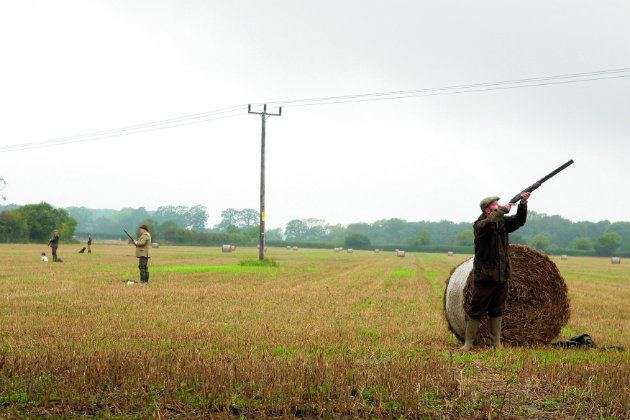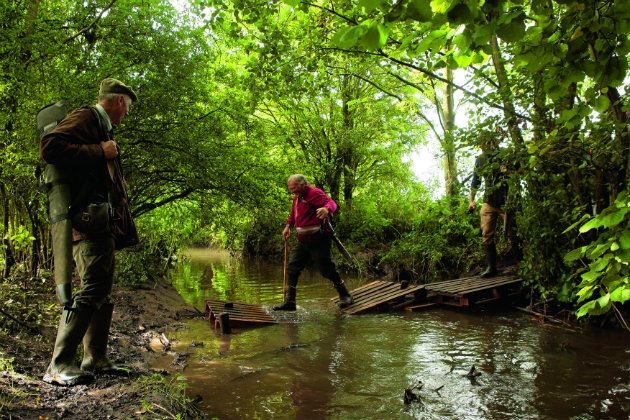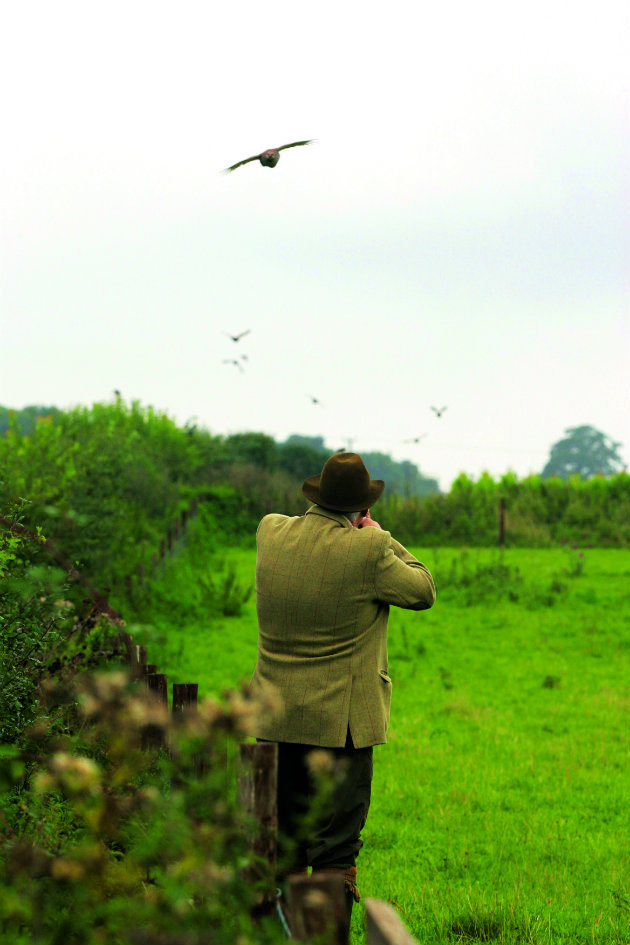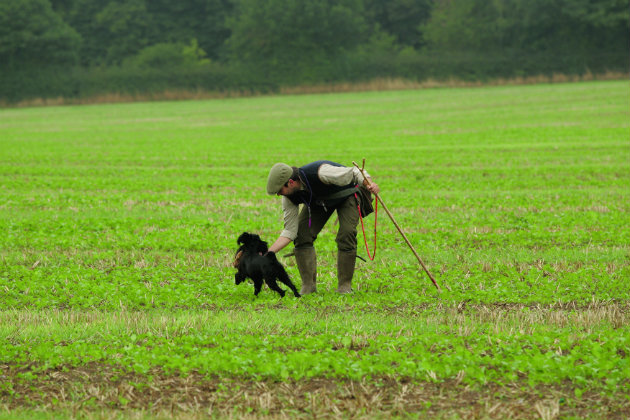Win CENS ProFlex DX5 earplugs worth £1,149 – enter here
Partridge shooting at Wappenshall in Shropshire

Twenty years ago, I reported for Shooting Times on a then 350-acre Wappenshall partridge shoot in Shropshire, hard by the Wrekin, that 1,335ft hill which rises above and dominates the Shropshire Plain. Created by Jonathan Crow, whose father had farmed the land, the shoot was modest in size and devoted to both redleg and grey partridges.
Once part of the Duke of Sutherland’s Lilleshall estate, which had been broken up and sold a century ago, the land had always lent itself to the good husbandry and promotion of partridges. Today, that premise is upheld by Jonathan, though the enterprise is on a very different scale. One thing has not changed over two decades: Jonathan’s enthusiasm and love for partridges. Notably, he has endeavoured with remarkable success to show partridge shooting on a scale that, all too often, catches unaware Guns who are used solely to driven pheasants.
Today, the Wappenshall shoot is in the region of 1,200 acres, of which 450 acres comprise the partridge beat. It is, agrees Jonathan, still a small-scale shoot in terms of partridges, but it has the singular advantage of a considerable number of tall and substantial hedges that are designed to recall the traditional classic days of driven partridge shooting. There is still a mix of redlegs and greys, all of which are released, though each season a small number of broods is reared in the wild by the grey partridges.
Wild inspiration
Jonathan has been involved with partridges since he was 14 when a neighbour asked him if, in his school holidays, he would put down and look after some partridges on his father’s land so that he could enjoy some shooting. In those days there were still wild grey partridges and this was to prove the catalyst that was to inspire his enthusiasm for the birds, both redlegs and greys.
“Over the years, I’ve done my best to source grey partridge stock that will behave as close to wild birds as possible,” said Jonathan. “The vast number of North European Danish grey partridges that were released over here in the 1980s and 1990s tended, largely through mismanagement, to form large packs that poured over the Gunline.
“The trick with grey partridges is to keep them in small covey groups so as to enhance the chance of decent bags. We rear in smaller numbers and release the birds in different batches, and though at one stage we did have our own breeding stock this, sadly, died out some time ago. We now buy in our eggs from a specialist gamefarm in France.”
Jonathan, a member of the Game Farmers’ Association and chairman until last year, also runs Wrekin Game, which supplies both pheasants and partridges to local shoots. He makes the point
that all pheasant poults are from overwintered closed flocks and pheasants and partridges alike are reared on grass. The man in charge, Mark Davies, has worked on the gamefarm for five years and now has been appointed full-time gamekeeper on the shoot. This is his first season.
Adjustable drives
Driven partridge shooting is wind dependent and, as such, the drives at Wappenshall can readily be adjusted. One drive can be taken in three different directions, according to the prevailing wind. All the fields comprise a mixture of gamecover, stubble and catchcrops such as stubble turnips, and there’s some 90 acres of fodder beet. Usually, between six and eight drives fill the day, but this is never set in stone. The average field size is only 20 acres, so the drives tend to be short and sharp.
Every efficient shoot is beater and picker-up dependent and here Jonathan enjoys the assistance of a dozen or so enthusiastic beaters, some of whom work on the gamefarm. Pleasing to see, too, that the team mingles with the Guns, while several also run excellent dogs. Among the beaters was Pip Dorricot, an enthusiastic eel fisherman when he’s not beating. However, this year, he told me, has been a disaster for eel fishing and he believes numbers have severely declined.
Flavour of the month
Cockers and sprockers are flavour of the month in the shooting world. Here Roger Fleetwood was picking-up with cockers, and Jon Auliffe with a Labrador and nine-month-old sprocker, Izzy. This was only the little black sprocker’s second day out and she was largely watching the action and picking-up the odd bird. Dave Whittingham, too, was working his cocker and 14-month-old German wirehaired pointer, a useful dog with great potential. Dave is regional secretary for the West Midlands border region of the British Falconry Club and flies peregrines. The nine Guns were all from Lancashire and this was their first time at Wappenshall. Eight drives were to be taken during the day, with five in the morning, followed by a truly excellent lunch in the Pheasant Inn, close by in the village of Admaston. A missive received from one of the Guns, James Rogerson, neatly sums up the day’s sport.
“I took a full team of experienced and novice guns to Wappenshall and we all had some fantastic shooting, testing everyone,” wrote James. “The wind was still on the first two drives, but despite this the beaters worked hard and produced some memorable partridges over the line.
“After an excellent lunch in the local pub, the wind picked up and the beaters produced some truly phenomenal partridges over the Guns. This was traditional partridge shooting at its very best and every Gun came home with the memory of several shots that will stay with them for a long time.
“Not only was the sport fantastic, but the hospitality was excellent, with tea and coffee on arrival, a good two-course lunch and some tasty cake and scones after the shoot. The pickers-up and beaters worked hard throughout and were polite and friendly. I took my dogs to sit by the peg with me and a picker-up asked whether I would like to work them and what types of retrieves I would like left for them.”
Indeed, a south-westerly wind transformed the three afternoon drives. Matthew Hylands took three right-andlefts with 14 birds to his gun. A superb note on which to end.
The flight patterns of reds and greys
The flight patterns of redleg and grey partridges are very different. Jonathan Crow explains: “At the beginning of the season the red-legged partridges tend to come over the Gunline in one large flush and the greys are mixed up with them, but as the season progresses, a distinct pattern emerges. The redlegs don’t fly in coveys but more in the style of pheasants, whereas the greys will flush, screeching and exploding over the Guns. For Guns used to shooting pheasants, this can be quite intimidating and I always give a pep talk before the day starts.
“Many Guns don’t master the art of shooting greys, but I tell them to shoot in front, shoot early and pick your target.”
Related Articles
Get the latest news delivered direct to your door
Subscribe to Shooting Times & Country
Discover the ultimate companion for field sports enthusiasts with Shooting Times & Country Magazine, the UK’s leading weekly publication that has been at the forefront of shooting culture since 1882. Subscribers gain access to expert tips, comprehensive gear reviews, seasonal advice and a vibrant community of like-minded shooters.
Save on shop price when you subscribe with weekly issues featuring in-depth articles on gundog training, exclusive member offers and access to the digital back issue library. A Shooting Times & Country subscription is more than a magazine, don’t just read about the countryside; immerse yourself in its most authoritative and engaging publication.










